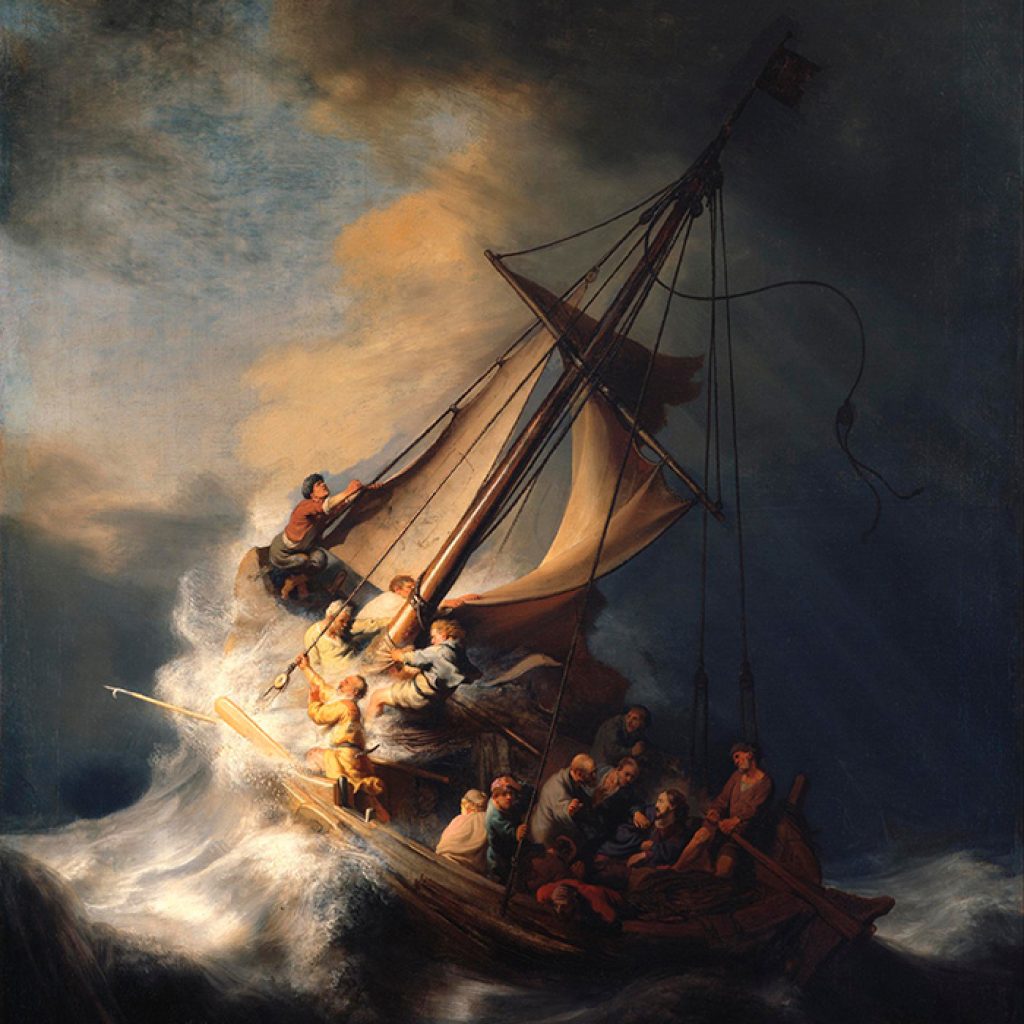By Neal Windham
Rembrandt’s wonderful painting Storm on the Sea of Galilee is a study in how the disciples interact with Jesus in the midst of a terrifying squall. The Dutch master uses light sparingly, but ever so carefully, highlighting the bow and its frantic crew. At the very front of the boat we see a man sitting cross-legged, arms extended, as he tends to the sail. He is lifted fully 10 feet off the sea’s violent surface by a massive and unforgiving wave. But he doesn’t appear to be worried or upset, even though he is about to take a very hard fall. Another of the crew works the mast, using every ounce of his strength to secure the tattered sail, and still another tentatively tends to the rigging, suggesting a mixture of fear and unknowing.
The stern of the boat, cast in shadow, suggests a very different response to the storm. Here the disciples work to rouse Jesus and inquire whether he is at all concerned about their plight. Another disciple, quite elderly, prays. He is actually in the middle of the boat, somewhere between the light and darkness. Still another cowers; away from all the action, there is nothing but fear in his anxious eyes. And still another—we’ll call him “Barfolomew”—is vomiting over the side of the vessel. A final disciple carefully mans the tiller, securing the ship’s direction against all the power the storm is dishing out.
Rembrandt even offers a curious personal reflection by placing himself somewhere near the stern, holding onto a rope for dear life with one hand, palm glued to his forehead with the other, gazing directly at the people viewing his painting as if in disbelief. He seems to be saying, “What am I doing here?”
Against all of this violent action—gale force of wind, brute force of wave, skies black with rain, sea ominous and roiling—there rises high above the entire crew a towering mast. It is centered and prominent, its shape unmistakable: it is a cross.
Somewhere in the darkness of our existence, in those precarious moments when we cry out, “Teacher, don’t you care if we drown?” stands the cross of Jesus. It towers high above our fears, questions, sickness, effort, doubt, discouragement—even our prayers. And from this place, high and visible to those who care to look up, it speaks hope into our suffering, light into our darkness, courage into our fears, and meaning into our chaos. It proclaims, as today we proclaim around this table, the good news of salvation available to all.
________________
Neal Windham is professor of New Testament and Christian spiritual formation at Lincoln (Illinois) Christian University.


0 Comments